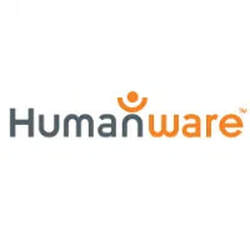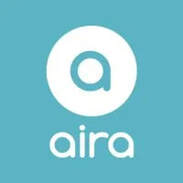|
The joy of receiving assistive equipment spreads to family members and caregivers! The daughter of a recent grant recipients expresses the critical need for hardware/software packages that have extended or expanded her mother’s remaining vision.
Dear Eye-Link Board, I am writing to thank you for the use of the LyriQ text to speech reader for my mother. She loves it, and has given her so much freedom. She can now read mail, daily devotions, and other literature without help. Our vision counselor Gena helped us set up the machine, and it is now a permanent fixture on Mom’s side table. We sincerely appreciate your generosity and compassion. Sincerely, Sue T. Putting assistive equipment into the hands of visually impaired people is Eye-Link’s daily mission, sharing the joy our recipients feel is our reward.
0 Comments
Eye-Link Wisconsin is actively seeking super heroes to help empower individuals learning to live with blindness and visual impairment.
Our Eye-Link Wisconsin mission is to give specially designed technologies to individuals with low vision or blindness who face economic barriers and financial challenges. These unique equipment packages allow recipients to regain access to all forms of information and help them return to self-sufficiency. Share the joy of putting smiles on faces of young and old by becoming a volunteer with Eye-Link Wisconsin. Please contact us if you are interested in becoming a super hero to your fellow Wisconsinites dealing with uncorrectable sight loss. Text or call Jeff Agee-Aguayo at 920-360-7258.
The National Herald has reported that Representatives Carolyn Maloney (D-NY-12) and Gus Bilirakis (R-FL-12), have reintroduced the Medicare Demonstration of Coverage for Low Vision Act. This legislation would help vision-impaired Medicare beneficiaries live safe and independent lives by creating a five-year national demonstration project to evaluate the economic impact of allowing reimbursement for low vision devices, which are currently excluded from Medicare coverage.
The legislation was first introduced in the 116th Congress in 2019 and had 25 original co-sponsors in the House of Representatives. Medicare coverage for assistive equipment would offer more choice to visually impaired Americans who are Medicare eligible. Representative Bilirakis, a visually impaired American himself, believes the legislation is a preventative measure that will help seniors stay healthy, active, and self-sufficient for a longer period of time as they access low vision assistive devices that have previously been out of reach for seniors on a fixed income. Eye-Link presented its first grant in 2001, and continues to provide a wide range of specialized assistive equipment and adaptive technologies to visually impaired and blind residents in Minnesota, North Dakota and Wisconsin, many who are Seniors challenged by substantial and uncorrectable sight loss. HOW YOUR OWN DNA COULD SOMEDAY SAVE YOUR VISION Imagine living with a genetic disease that could cause blindness in your 40s—and your doctor tells you there are no treatment options. It's for patients like these that Johnson & Johnson is harnessing cutting-edge technology in the hope of finding real solutions.
By Hallie Levine October 11, 2021 It can be devastating to watch someone slowly lose their vision. Just ask James List, M.D., Ph.D., Global Therapeutic Area Head of Cardiovascular, Metabolism and Retina at Janssen Research & Development, part of the Janssen Pharmaceutical Companies of Johnson & Johnson. Before he joined the company in 2014, the Harvard endocrinologist spent his days counseling patients with diabetes. “Many people don’t realize that diabetes can cause irreversible damage to multiple organs, including the eyes,” he says. READ MORE by Chad Nelson
Procedure with CRISPR tool ‘very exciting’ Scientists say they have used the gene editing tool CRISPR inside someone’s body for the first time, a new frontier for efforts to operate on DNA, the chemical code of life, to treat diseases. A patient recently had it done at the Casey Eye Institute at Oregon Health & Science University in Portland for an inherited form of blindness, the companies that make the treatment announced Wednesday. They would not give details on the patient or when the surgery occurred. It may take up to a month to see if it worked to restore vision. If the first few attempts seem safe, doctors plan to test it on 18 children and adults. “We literally have the potential to take people who are essentially blind and make them see,” said Charles Albright, chief scientific officer at Editas Medicine, the Cambridge, Massachusetts- based company developing the treatment with Dublin-based Allergan. “We think it could open up a whole new set of medicines to go in and change your DNA.” Dr. Jason Comander, an eye surgeon at Massachusetts Eye and Ear in Boston, another hospital that plans to enroll patients in the study, said it marks “a new era in medicine” using a technology that “makes editing DNA much easier and much more effective.” Doctors first tried in-the-body gene editing in 2017 for a different inherited disease using a tool called zinc fingers. Many scientists believe CRISPR is a much easier tool for locating and cutting DNA at a specific spot, so interest in the new research is very high. The people in this study have Leber congenital amaurosis, caused by a gene mutation that keeps the body from making a protein needed to convert light into signals to the brain, which enables sight. They’re often born with little vision and can lose even that within a few years. Scientists can’t treat it with standard gene therapy – supplying a replacement gene – because the one needed is too big to fit inside the disabled viruses that are used to ferry it into cells. So they’re aiming to edit, or delete the mutation by making two cuts on either side of it. The hope is that the ends of DNA will reconnect and allow the gene to work as it should. It’s done in an hourlong surgery under general anesthesia. Through a tube the width of a hair, doctors drip three drops of fluid containing the gene editing machinery just beneath the retina, the lining at the back of the eye that contains the light-sensing cells. “Once the cell is edited, it’s permanent and that cell will persist hopefully for the life of the patient,” because these cells don’t divide, said one study leader not involved in this first case, Dr. Eric Pierce at Massachusetts Eye and Ear. Doctors think they need to fix a 10th to a third of the cells to restore vision. In animal tests, scientists were able to correct half of the cells with the treatment, Albright said. The eye surgery itself poses little risk, doctors say. Infections and bleeding are relatively rare complications. One of the biggest potential risks from gene editing is that CRISPR could make unintended changes in other genes, but the companies have done a lot to minimize that and to ensure that the treatment cuts only where it’s intended to, Pierce said. He has consulted for Editas and helped test a gene therapy, Luxturna, that’s sold for a different type of inherited blindness. Some independent experts were optimistic about the new study. “The gene editing approach is really exciting. We need technology that will be able to deal with problems like these large genes,” said Dr. Jean Bennett, a University of Pennsylvania researcher who helped test Luxturna at the Children’s Hospital of Philadelphia. In one day, she had three calls from families seeking solutions to inherited blindness. “It’s a terrible disease,” she said. “Right now they have nothing.” Dr. Kiran Musunuru, another gene editing expert at the University of Pennsylvania, said the treatment seems likely to work, based on tests in human tissue, mice and monkeys. The gene editing tool stays in the eye and does not travel to other parts of the body, so “if something goes wrong, the chance of harm is very small,” By Chad Nelson More visual assistance for people coping with sight loss is on the way! The American Council of the Blind, ACB, working with other allied organizations is aiming to improve the quantity of audio described projects. The goal is to bring more meaning and entertainment to Cultural events, movies, televised series, and educational offerings for Blind and visually impaired individuals. The goal is to have more audio description!
Audio description or voice over narrative makes the visual imagery of paintings, television, movies, museums, educational materials, works of art, and the wonders of national parks accessible to people challenged by sight loss. The unseen visual elements being described can include scenery, costumes, gestures, settings, facial expressions, and all other visually important images. Action films usually containing little dialogue an overwhelming musical score, explosions, gunshots, and screams are made understandable having the nonverbal actions and characters audibly described. The ACB maintains a list of 3,368 described DVD’s, television broadcasts, movies, performing arts series, museums, and national parks all available at: www.ACB.Org/adp Retinitis Pigmentosa, commonly referred to as RP, is one of the leading causes of blindness in the United States. There are over two hundred forms of RP. The National Institute of Health sponsors research involved in drug or gene therapies designed to reduce the “noise” which is often clutter or the pigmenting of good retinal cells. The “noise” seems to be generated by nerve cells in the retina reducing vision. The therapies work by repairing or limiting the “noise” generated by these nerve cells.
UC Berkeley neurobiologists have already shown that this approach improves vision in mice with RP that would slowly leave them Blind. The work at Berkeley is funded by the National Eye Institute, and the Thome and Fighting Blindness.  HumanWare has provided a simple method for learning how to use four of their products- Victor Reader Stream, Victor Reader Track, Braille Note Apex, and Braille Note Touch. An easy to use tutorial on each product is available through a phone call. Dial the Humanware training center at: 800-722-3393. Follow the guide by using your key pad, the keys on your phone. Key in the number associated with your product and key in the feature of the product you wish to learn more about. You can receive a personalized product tutorial through a simple telephone call! 
A recently developed service for people with little or no sight called AIRA is being employed in major cities throughout the United States. This new service uses a combination of augmented visual reality, artificial intelligence, and professional agents who provide instant access to objective visual information. Horizon Smart Glasses, with a miniature camera and two-way FM broadcast features are tethered to a distant agent who monitors and explains to the explorer what the Smart Glasses camera is “seeing”.
Smart glass wearers are referred to as explorers and that they are. AIRA empowers people who are visually impaired or Blind to regain their daily living skills, like taking uncharted walks and hikes, reading, using optical scanning devices, cooking, identifying colors, managing money, getting Uber or Lift rides, and more actively participating in all family activities. Wearing a pair of AI Smart Glasses tethered to a horizon controller, explorers can navigate all aspects of daily living. Using the AIRA service immediately improves the quality of life, provides instant access to all forms of information, helps to quickly complete tasks, and creates awareness of any situations that surrounds you. It enables faster low vision/blindness rehabilitation, steadily improves confidence levels when approaching daily living and more complicated tasks. For more information and pricing options please call Horizon at: 800-835-1935 |
AuthorWrite something about yourself. No need to be fancy, just an overview. Archives
December 2023
Categories |


 RSS Feed
RSS Feed